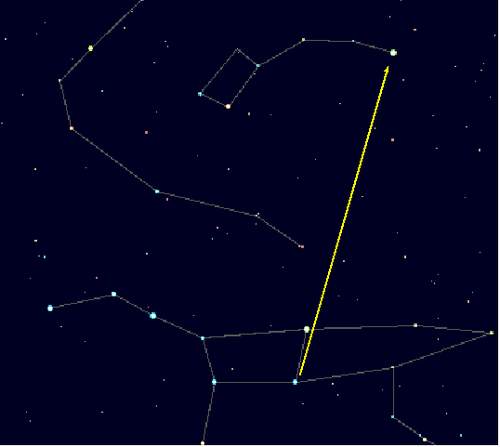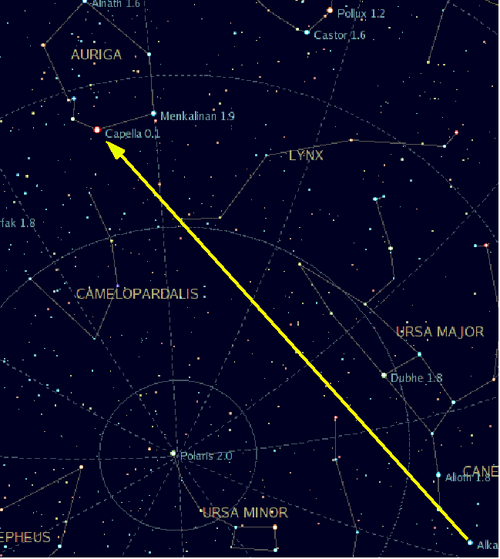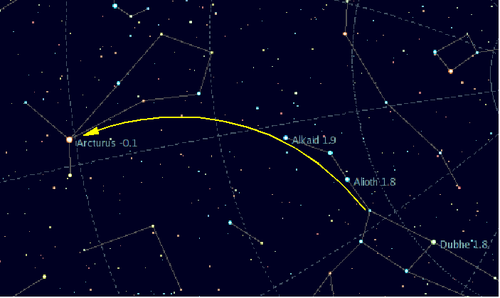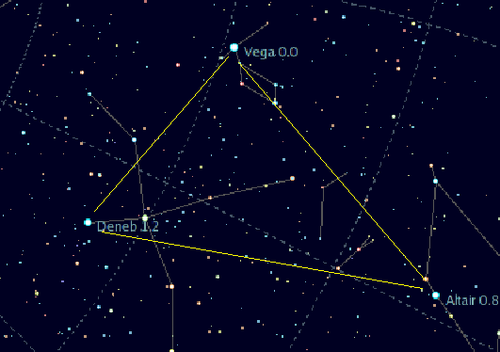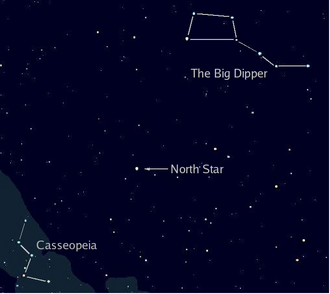AY Honor Stars Answer Key used by North American Division
1
1a
The Earth's nearest celestial neighbor is the Moon, which has an average distance from the Earth of about 240,000 miles (386,000 kilometers).
1b
The tides are governed by the Moon, and to a lesser extent, by the Sun. The gravitational pull from these bodies moves the water.
1c
An eclipse is caused when the Sun, Earth, and Moon are in a direct line with one another. When the Earth is between the Sun and the Moon, we see a lunar eclipse, which is the Earth's shadow falling on the moon. When the Moon is between the Sun and the Earth, we see a solar eclipse, which is when the Moon's shadow falls on the Earth (blocking the Sun).
1d
A shooting star is not a star at all, but rather a meteor. A meteor is any celestial body (usually quite small) that falls to the Earth. Most burn up in the atmosphere before reaching the surface, leaving a bright, short-lived streak in the sky.
To discover more see the Meteorites honor.
2
Place the "sun" model in the center. Place the "earth" some distance from the sun, and show how it travels in a near circle around the sun. The moon travels around the earth, but it always shows the same face to the earth (it's rotation on its axis takes the same amount of time as its orbit around the earth.
3
The planets in our solar system, starting from the Sun, are Mercury, Venus, Earth, Mars, Jupiter, Saturn, Uranus, and Neptune. Pluto was also considered a planet from 1930 until 2006 when the International Astronomer's Union (IAU) was prompted by the discovery Eris, a body slightly smaller than Pluto, to come up with a formal definition of the word "planet." For years leading up to this announcement there had been rumblings in the scientific community that classifying Pluto as a planet had been a mistake, much as the classification of Ceres, the largest asteroid had been a mistake in the 1800's. After the discovery of Ceres, more and more asteroids were discovered, and it became increasingly clear that it was not a planet. The same thing began to happen in the late 1990's when astronomers began to discover several Pluto-like objects in the Kuiper belt. The debate came to a head with the discovery of Eris, which has more mass than Pluto, but is very slightly smaller. The IAU would have to either recognize Eris as the tenth planet or "demote" Pluto. The demotion of Pluto, though not popular with the general public, makes the most scientific sense and demonstrates that science is capable of correcting its errors.
The new definition of a planet requires that an object a) orbit a star (such as the Sun), b) not orbit another planet (such as a satellite), and c) dominate the vicinity of its orbit. Pluto did not make the cut because its orbit is dominated by Neptune, and there are many objects orbiting in its vicinity that Pluto has no effect upon.
There are a number of mnemonic phrases that are easily memorized for remembering the names of the planets, including "My Very Energetic Mother Just Served Us Noodles.
4
Light travels at 186,000 miles per second (not miles per hour), or 300,000 kilometers per second. In one year, light will travel 5.88 trillion miles (9.4 trillion km). This distance is also called a light-year. How far is that?
Earth orbits the sun at an average of 92,955,807 miles (149,597,870 km). This distance from Earth to the sun is called an astronomical unit, or AU. It takes light from the Sun about 8 minutes and 20 seconds to cover the distance from the Sun to the Earth. There are 63,239 AUs in a light-year since light can travel 63,239 times further in an Earth year than it takes to get from the Sun to Earth.
AUs are easy to work with in our solar system. Jupiter, for example, is 5.2 AU from the Sun or 5.2 times further from the Sun than the Earth is, while Neptune is 30.07 AU from the Sun.
However, when you move outside our solar system the distances get much larger. The distance to the nearest star, Proxima Centauri, is about 268,770 AU and the numbers get bigger from there. To express such long distances, astronomers use the light-year. At 63,239 AU to the light year, that closest star Proxima Centauri is about 4.25 light-years away, which means it takes 4.25 of our years for its light to reach our eyes. When we star gaze we are really looking back in time.
In 2016 scientists announced they found a galaxy they called GN-z11 which they estimate is 32 Billion light-years away. If you ever wondered if God and his creation is really eternal without beginning or end, think about the fact God created a galaxy before 32 Billion years ago.
5
The word planet means wanderer because the planets appear to wander about the sky relative to the stars. The stars do not move in relation to one another (although they all appear to move together because of the Earth's rotation on its axis).
Which eight stars you choose to teach your Pathfinders to identify will depend on the season (spring, summer, winter, or fall), although some stars are visible year-round.
Stars visible in the Northern Hemisphere
Polaris
Polaris is one of the most useful stars for a person in the Northern Hemisphere to be able to identify, as it can tell you two things: which way is north, and what is your latitude (if your latitude is 38°, Polaris will be 38° above the horizon).
Capella
Capella can be found by following the line made by the two stars in the Big Dipper's handle and extending it across the Dipper's bowl.
Arcturus
Arcturus is the brightest star in the constellation Boötes, and the third brightest star in the night sky. Arcturus can be found in the summer by following the arc made by handle of the Big Dipper (away from the dipper's bowl).
6
A constellation is any one of the 88 areas into which the sky - or the celestial sphere - is divided. The term is also often used less formally to denote a group of stars visibly related to each other in a particular configuration or pattern.
- Ursa Major
- Ursa Major is better known as the Big Dipper. It appears in the north and is fairly easy to identify. It is illustrated in a previous requirement.
- Ursa Minor
- Ursa Minor is better known as the Little Dipper. Use the instructions given previously for finding Polaris, which is the end of the Little Dipper's handle. Unfortunately, the stars that make up Ursa Minor are relatively dim, making this one a bit more difficult to find.
- Cassiopeia
- Cassiopiea is illustrated in the next requirement and is generally visible (at some time during the night) all year round. It is on the opposite side of Polaris from the Big Dipper.
- Boötes
- Instructions for finding Arcturus, and thus the constellation Boötes are given in a previous requirement.
- Cygnus, Altair, and Lyra
- These are easily identified summer constellations. The brightest stars in each of these three make up the Summer Triangle. Once the stars are found, it is easy to find the constellations they are part of. Vega is the brightest star in the Summer Triangle, and it is a member of the constellation Lyra. Cygnus is also known as the Northern Cross. The triangle is completed by Altair which is a member of the constellation Aquila.

The Winter Circle is made up of several bright stars visible in the Northern hemisphere's winter. The easiest constellation to find in the Winter Circle is Orion. Following Orion's belt will lead to Sirius, the brightest star in the sky and a member of Canis Major (the "big dog"). Canis Minor (the "little dog") is clockwise from Sirius. Continuing clockwise, we come to Gemini, Auriga, and Taurus.
The constellations that are visible throughout the year are the ones near the celestial poles:
Northern Hemisphere:
- Ursa Minor
- Ursa Major
- Draco
- Cepheus
Southern Hemisphere:
- Octans
- Mensa
- Hydrus
- Chameleon
- Volans
- Pavo
- Musca
7
- Northern Hemisphere
- These stars and constellations can be seen from anywhere north of the tropics in the Northern Hemisphere (they are more difficult to see in the tropics, and the North Star cannot be seen at all from the Southern Hemisphere). The North Star never appears to move at all, and it can be found due north. The Big Dipper and Cassiopeia will rotate around the North Star (also known as Polaris, since it is directly above the North Pole). When drawing the diagram, be sure to include the seven stars in the Big Dipper, the five in Cassiopeia, and the North Star. Make sure that the two stars at the end of the Big Dipper's "bowl" point to the North Star. Cassiopeia should be shaped like a somewhat flattened "W".
- Southern Hemisphere
The Southern Cross, Scorpio, and Orion are not really located very close to one another. It would be possible to draw them all on a single diagram, but since Orion is on the other side of the sky from the other two, you'd end up drawing an awful lot of sky. Therefore, it should be acceptable to draw these three on independent diagrams.
8
A large gathering of stars and bodies making up one of many galaxies. The portion visible in the night sky of Earth is only a single dimensional or flat view of the galaxy as our solar system is part of the same galaxy we have lack for a broader perspective.
9
This is not a star at all but the planet Venus and draws in part its modern status as the Morning Star and Evening Star from mythology. Venus never appears on the opposite horizon from the sun because its orbit lies inside Earth's orbit (that is, its orbit is closer to the sun that the earth's orbit). Mercury too fits this profile but since it is even closer to the sun than Venus, it is only visible briefly before sunrise or just after sunset.
10
Zenith is the point in space directly overhead. If you extend a line from the zenith to the point on Earth upon which you are standing, and continue that line through the Earth and out the other side, it would point to the nadir. In other words, nadir is the direction pointing directly below a particular location. The line connecting the zenith and nadir passes through the point on Earth where you're standing and also passes through the center of the Earth and out the other side.
11
An Aurora is a beautiful natural phenomenon that often occurs in the polar regions of Earth.
The immediate causes of aurora are precipitating energetic particles. These particles are electrons and protons that are energized in the near geospace environment. This energization process draws its energy from the interaction of the Earth's magnetosphere with the solar wind.
12
- "December 16, 1848, the Lord gave me a view of the shaking of the powers of the heavens. I saw that when the Lord said heaven, in giving the signs recorded by Matthew, Mark, and Luke, He meant heaven, and when He said earth He meant earth. The powers of heaven are the sun, moon, and stars. They rule in the heavens. The powers of earth are those that rule on the earth. The powers of heaven will be shaken at the voice of God. Then the sun, moon, and stars will be moved out of their places. They will not pass away, but be shaken by the voice of God.
- Dark, heavy clouds came up and clashed against each other. The atmosphere parted and rolled back; then we could look up through the open space in Orion, whence came the voice of God. The Holy City will come down through that open space. I saw that the powers of earth are now being shaken and that events come in order. War, and rumors of war, sword, famine, and pestilence are first to shake the powers of earth, then the voice of God will shake the sun, moon, and stars, and this earth also. I saw that the shaking of the powers in Europe is not, as some teach, the shaking of the powers of heaven, but it is the shaking of the angry nations.” – Passages from Ellen G. White Early writings, page 41
The above statement clearly mentions the events that would occur during Christ’s second coming to this earth. The passage also mentions that God’s voice would be heard through the open space in the Orion and also the “New Jerusalem” would descend from that open space. It is in agreement with the Holy Bible in Revelation 3:12 “Him that overcometh will make a pillar in the temple of my God, and he shall go no more out: and I will write upon him the name of my God, and the name of the city of my God, which is New Jerusalem, which cometh down out of heaven from my God: and I will write upon him my new name.”
The same is also mentioned in the book of Revelation, chapter 21:2 & 3 “And I John saw the holy city, New Jerusalem, coming down from God out of heaven, prepared as a bride adorned for her husband. And I heard a great voice out of heaven saying, Behold, the tabernacle of God is with men, and He will dwell with them, and they shall be His people, and God Himself shall be with them, and be their God.”
The passage also mentions on many things that would happen at the end of time whereby it affects nature terribly and also war between world countries with no more peace and safe place for humans.
References
International Astronomer's Union [1]
Notes
On August 24, 2006 the International Astronomers Union, a non-governmental entity, reclassified Pluto giving it the status of Dwarf Planet. This new classification is based on their updated definition of what a planet is. One reason for the change is because the new definition requires that a planet "dominate" its orbit. Pluto's orbit crosses and is dominated by Neptune. Furthermore, scientists are discovering that the region of Pluto's orbit, which is known as the Kuiper Belt, is similar to the asteroid belt. There are many Pluto-like objects in that region, including one named Eris which is very nearly as large as Pluto. This means Pluto is more like an asteroid than it is like a planet.



